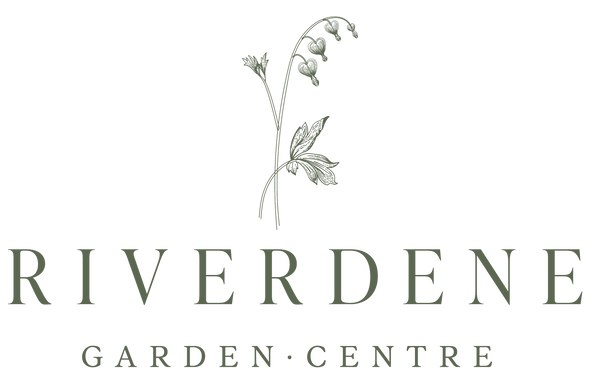Riverdene Garden Centre
6" Staghorn Fern
6" Staghorn Fern
Couldn't load pickup availability
Staghorn Fern (Platycerium spp.) – Care Guide
Overview
The Staghorn Fern (Platycerium spp.) is an epiphytic fern native to tropical and subtropical regions. It’s named for its distinctive fronds that resemble the antlers of a stag. These ferns grow naturally on trees or rocks, absorbing moisture and nutrients from the air and rain. They are grown either mounted on plaques, driftwood, or in hanging baskets, and are a conversation piece in any home or garden.
Key Characteristics
Botanical Name: Platycerium bifurcatum (most common species)
Common Name: Staghorn Fern
Plant Type: Epiphytic fern (air plant)
Growth Habit: Upright, clumping, or cascading
Frond Types:
-
-
Shield fronds: Round, flat, basal fronds that protect roots and help collect debris
-
Fertile fronds: Antler-like, upright or cascading, responsible for reproduction
-
Light Requirements
Bright, indirect light is ideal
Will tolerate dappled sun or light shade
Avoid direct sunlight, especially midday — it can scorch fronds
Indoors: Place near an east or north-facing window, or filtered south light
Watering Needs
Watering frequency depends on humidity and mounting method:
-
-
Mounted plants: Soak the entire root ball and plaque in water for 15–30 minutes, then let drain completely. Water every 5–10 days.
-
Potted plants: Water thoroughly when the top inch is dry; avoid soggy soil.
-
In high humidity, water less frequently
Mist occasionally in dry indoor environments, but misting alone is not enough
Soil & Mounting
Staghorn ferns do best mounted (to wood, bark, or a wall plaque)
Use a base of sphagnum moss or a mix of orchid bark and peat
If potted, use a well-draining epiphyte mix (orchid mix with moss)
Temperature & Humidity
Ideal temperature: 18–26°C (65–80°F)
Humidity: Thrives in 60%+ humidity
-
-
Use a humidifier or humidity tray indoors
-
Protect from cold drafts and temps below 10°C (50°F)
Fertilizing
Feed monthly during the growing season (spring to early fall)
-
-
Use a diluted balanced liquid fertilizer (like 20-20-20)
-
Apply directly to the roots or soak with fertilizer in water
-
No fertilizer needed in winter
Pruning & Maintenance
Do not remove brown shield fronds – they are natural and protect the root base
Trim only damaged or dying fertile fronds
Clean dust off fertile fronds with a soft, dry brush — never wipe with a wet cloth
Common Problems
Brown spots on shield fronds: Normal aging process
Yellowing fronds: Overwatering or poor drainage
Black tips or mushy roots: Root rot — reduce watering
Pests: Watch for scale, mealybugs, and spider mites
-
-
Treat with neem oil or insecticidal soap
-
Toxicity
Non-toxic to pets and humans
Bonus Tips
Ideal for vertical gardening, bathrooms, or living walls
A great choice for people who love plants with dramatic, sculptural foliage
-
Rotate periodically for even growth if mounted
